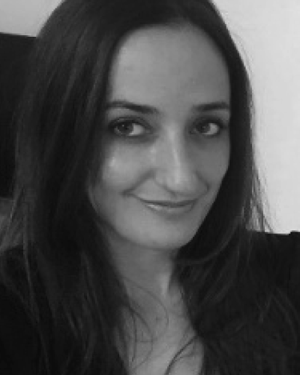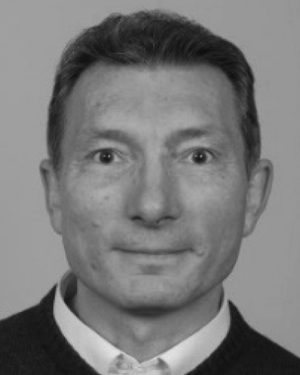Abstract:
This article presents a novel constant false alarm rate (CFAR) compressed detection approach for human detection using the impulse radio ultrawideband (IR-UWB) radar. The...Show MoreMetadata
Abstract:
This article presents a novel constant false alarm rate (CFAR) compressed detection approach for human detection using the impulse radio ultrawideband (IR-UWB) radar. The associated Xampling scheme operates way below the Nyquist limit and is designed to minimize the sensing matrix coherence (SMC), without increasing the implementation complexity. The proposed signal-processing architecture aims to detect both moving and stationary people in the framework of heavy-cluttered use cases, such as smart factory indoor environments. To address this challenge, we not only rely on standard radar signal processing, including moving target indicator (MTI) filtering, noise whitening, and Doppler focusing (DF), but also introduce two new algorithms for joint sparse reconstruction (SR) and CFAR detection, in fast-time and range-Doppler domains, respectively. We propose a specific detection statistic, which is proven to be appropriate for both algorithms, its distribution being identified and then validated by standard goodness-of-fit tests. Moreover, it enables reducing the CFAR scheme complexity, since the associated detection threshold is invariant to the noise power, thus making unnecessary its estimation. The proposed approach is finally validated using both simulated and experimentally measured data in an Industry 4.0 indoor environment, for several canonical scenarios. The effectiveness of our CFAR compressed detection algorithms for human detection is thus fully demonstrated, and their performance is assessed and compared to that obtained by signal processing at the Nyquist sampling rate.
Published in: IEEE Transactions on Radar Systems ( Volume: 2)
Funding Agency:

CNRS, UMR 6285 Lab-STICC, Université de Bretagne Occidentale, Brest, France
Zaynab Baydoun (Student Member, IEEE) received the M.Sc. degree in electronics from the Lebanese University, Lebanon, in 2014, and the M.Sc. degree in complex systems engineering from INSA Rennes, Rennes, France, in 2020. Since 2021, she has been a Ph.D. student with the University of Brest, Brest, France, and Lab-STICC, CNRS, UMR 6285.
She also serves as a Temporary Research and Teaching Assistant with the University of B...Show More
Zaynab Baydoun (Student Member, IEEE) received the M.Sc. degree in electronics from the Lebanese University, Lebanon, in 2014, and the M.Sc. degree in complex systems engineering from INSA Rennes, Rennes, France, in 2020. Since 2021, she has been a Ph.D. student with the University of Brest, Brest, France, and Lab-STICC, CNRS, UMR 6285.
She also serves as a Temporary Research and Teaching Assistant with the University of B...View more

CNRS, UMR 6285 Lab-STICC, Université de Bretagne Occidentale, Brest, France
Roua Youssef (Member, IEEE) received a diploma degree in telecommunications engineering from the Lebanese University of Beirut, Lebanon, the M.Sc. degree in electronic engineering from IMT Atlantique, Brest, France, in 2007, and the Ph.D. degree in telecommunications from IMT Atlantique, in 2011.
She is currently an Assistant Professor at the University of Brest, France, and also a member of the Information Security, Intel...Show More
Roua Youssef (Member, IEEE) received a diploma degree in telecommunications engineering from the Lebanese University of Beirut, Lebanon, the M.Sc. degree in electronic engineering from IMT Atlantique, Brest, France, in 2007, and the Ph.D. degree in telecommunications from IMT Atlantique, in 2011.
She is currently an Assistant Professor at the University of Brest, France, and also a member of the Information Security, Intel...View more

CNRS, UMR 6285 Lab-STICC, Université de Bretagne Occidentale, Brest, France
Emanuel Radoi (Senior Member, IEEE) graduated in radar systems from the Military Technical Academy of Bucharest, Romania, in 1992, the M.Sc. degree in electronic engineering from the University of Brest, Brest, France, in 1997, and the Ph.D. degree in signal processing from the University of Brest, in 1999.
From 1992 to 2002, he was with the Military Technical Academy of Bucharest, where he worked on radar signal processin...Show More
Emanuel Radoi (Senior Member, IEEE) graduated in radar systems from the Military Technical Academy of Bucharest, Romania, in 1992, the M.Sc. degree in electronic engineering from the University of Brest, Brest, France, in 1997, and the Ph.D. degree in signal processing from the University of Brest, in 1999.
From 1992 to 2002, he was with the Military Technical Academy of Bucharest, where he worked on radar signal processin...View more

Ecole nationale d’ingénieurs de Brest (ENIB), CNRS, UMR 6285 Lab-STICC, Plouzané, France
Stéphane Azou (Senior Member, IEEE) received the M.Sc. degree in electronic engineering and the Ph.D. degree from the University of Brest (UBO), Brest, France, in 1993 and 1997, respectively.
From 1998 to 2000, he was affiliated with the Signal Processing Group, French Naval Academy (École Navale), Lanvéoc, France. In 2000, he joined UBO as an Associate Professor, where he conducted research in the field of wireless commun...Show More
Stéphane Azou (Senior Member, IEEE) received the M.Sc. degree in electronic engineering and the Ph.D. degree from the University of Brest (UBO), Brest, France, in 1993 and 1997, respectively.
From 1998 to 2000, he was affiliated with the Signal Processing Group, French Naval Academy (École Navale), Lanvéoc, France. In 2000, he joined UBO as an Associate Professor, where he conducted research in the field of wireless commun...View more

CIMTI, Saint Joseph University of Beyrouth, Beirut, Lebanon
Tina Yaacoub received the Ph.D. degree in telecommunications from Université de Bretagne Occidentale, Brest, France, in 2017, and the dual engineering diploma degree in electronics and digital technologies from the Lebanese University, Lebanon, and École Polytechnique de l’Université de Nantes, Nantes, France, in 2024.
She is currently an Assistant Professor at Saint Joseph University of Beirut, Lebanon. Her main research ...Show More
Tina Yaacoub received the Ph.D. degree in telecommunications from Université de Bretagne Occidentale, Brest, France, in 2017, and the dual engineering diploma degree in electronics and digital technologies from the Lebanese University, Lebanon, and École Polytechnique de l’Université de Nantes, Nantes, France, in 2024.
She is currently an Assistant Professor at Saint Joseph University of Beirut, Lebanon. Her main research ...View more

CNRS, UMR 6285 Lab-STICC, Université de Bretagne Occidentale, Brest, France
Zaynab Baydoun (Student Member, IEEE) received the M.Sc. degree in electronics from the Lebanese University, Lebanon, in 2014, and the M.Sc. degree in complex systems engineering from INSA Rennes, Rennes, France, in 2020. Since 2021, she has been a Ph.D. student with the University of Brest, Brest, France, and Lab-STICC, CNRS, UMR 6285.
She also serves as a Temporary Research and Teaching Assistant with the University of Brest and Lab-STICC, CNRS, UMR 6285. Her primary research interests include UWB signal processing, compressed sensing, and detection systems.
Zaynab Baydoun (Student Member, IEEE) received the M.Sc. degree in electronics from the Lebanese University, Lebanon, in 2014, and the M.Sc. degree in complex systems engineering from INSA Rennes, Rennes, France, in 2020. Since 2021, she has been a Ph.D. student with the University of Brest, Brest, France, and Lab-STICC, CNRS, UMR 6285.
She also serves as a Temporary Research and Teaching Assistant with the University of Brest and Lab-STICC, CNRS, UMR 6285. Her primary research interests include UWB signal processing, compressed sensing, and detection systems.View more

CNRS, UMR 6285 Lab-STICC, Université de Bretagne Occidentale, Brest, France
Roua Youssef (Member, IEEE) received a diploma degree in telecommunications engineering from the Lebanese University of Beirut, Lebanon, the M.Sc. degree in electronic engineering from IMT Atlantique, Brest, France, in 2007, and the Ph.D. degree in telecommunications from IMT Atlantique, in 2011.
She is currently an Assistant Professor at the University of Brest, France, and also a member of the Information Security, Intelligence and Integrity (SI3) research team of the Lab-STICC, CNRS, UMR 6285. Her main research includes UWB signal processing, compressive sampling techniques and full-duplex communications.
Roua Youssef (Member, IEEE) received a diploma degree in telecommunications engineering from the Lebanese University of Beirut, Lebanon, the M.Sc. degree in electronic engineering from IMT Atlantique, Brest, France, in 2007, and the Ph.D. degree in telecommunications from IMT Atlantique, in 2011.
She is currently an Assistant Professor at the University of Brest, France, and also a member of the Information Security, Intelligence and Integrity (SI3) research team of the Lab-STICC, CNRS, UMR 6285. Her main research includes UWB signal processing, compressive sampling techniques and full-duplex communications.View more

CNRS, UMR 6285 Lab-STICC, Université de Bretagne Occidentale, Brest, France
Emanuel Radoi (Senior Member, IEEE) graduated in radar systems from the Military Technical Academy of Bucharest, Romania, in 1992, the M.Sc. degree in electronic engineering from the University of Brest, Brest, France, in 1997, and the Ph.D. degree in signal processing from the University of Brest, in 1999.
From 1992 to 2002, he was with the Military Technical Academy of Bucharest, where he worked on radar signal processing. He is currently Professor of Signal Processing with the Electronics Department, University of Brest. He is also with the “Information Security, Intelligence and Integrity” research team of the Lab-STICC, CNRS, UMR 6285. His main research interests currently include UWB signal processing, compressed sensing, time-frequency analysis, wireless communications, and full-duplex systems.
Emanuel Radoi (Senior Member, IEEE) graduated in radar systems from the Military Technical Academy of Bucharest, Romania, in 1992, the M.Sc. degree in electronic engineering from the University of Brest, Brest, France, in 1997, and the Ph.D. degree in signal processing from the University of Brest, in 1999.
From 1992 to 2002, he was with the Military Technical Academy of Bucharest, where he worked on radar signal processing. He is currently Professor of Signal Processing with the Electronics Department, University of Brest. He is also with the “Information Security, Intelligence and Integrity” research team of the Lab-STICC, CNRS, UMR 6285. His main research interests currently include UWB signal processing, compressed sensing, time-frequency analysis, wireless communications, and full-duplex systems.View more

Ecole nationale d’ingénieurs de Brest (ENIB), CNRS, UMR 6285 Lab-STICC, Plouzané, France
Stéphane Azou (Senior Member, IEEE) received the M.Sc. degree in electronic engineering and the Ph.D. degree from the University of Brest (UBO), Brest, France, in 1993 and 1997, respectively.
From 1998 to 2000, he was affiliated with the Signal Processing Group, French Naval Academy (École Navale), Lanvéoc, France. In 2000, he joined UBO as an Associate Professor, where he conducted research in the field of wireless communications until 2012. Between 2007 and 2012, he led the Signal Processing for Communications Research Group at the Lab-STICC laboratory (CNRS, UMR 6285). In September 2012, he became a Full Professor at the École Nationale d’Ingénieurs de Brest (ENIB), France. From 2017 to 2020, he served as the Head of the “Devices and Multiphysics Interfaces” team, and he currently leads the “Microwave Photonics & Photonics Architectures and Systems” team within Lab-STICC. His research interests include span optical communications, radio-over-fiber systems, UWB systems, physical layer monitoring and compensation, and advanced signal processing techniques.
Stéphane Azou (Senior Member, IEEE) received the M.Sc. degree in electronic engineering and the Ph.D. degree from the University of Brest (UBO), Brest, France, in 1993 and 1997, respectively.
From 1998 to 2000, he was affiliated with the Signal Processing Group, French Naval Academy (École Navale), Lanvéoc, France. In 2000, he joined UBO as an Associate Professor, where he conducted research in the field of wireless communications until 2012. Between 2007 and 2012, he led the Signal Processing for Communications Research Group at the Lab-STICC laboratory (CNRS, UMR 6285). In September 2012, he became a Full Professor at the École Nationale d’Ingénieurs de Brest (ENIB), France. From 2017 to 2020, he served as the Head of the “Devices and Multiphysics Interfaces” team, and he currently leads the “Microwave Photonics & Photonics Architectures and Systems” team within Lab-STICC. His research interests include span optical communications, radio-over-fiber systems, UWB systems, physical layer monitoring and compensation, and advanced signal processing techniques.View more

CIMTI, Saint Joseph University of Beyrouth, Beirut, Lebanon
Tina Yaacoub received the Ph.D. degree in telecommunications from Université de Bretagne Occidentale, Brest, France, in 2017, and the dual engineering diploma degree in electronics and digital technologies from the Lebanese University, Lebanon, and École Polytechnique de l’Université de Nantes, Nantes, France, in 2024.
She is currently an Assistant Professor at Saint Joseph University of Beirut, Lebanon. Her main research interests include UWB signal processing, compressed sensing, and AI applications in the medical field.
Tina Yaacoub received the Ph.D. degree in telecommunications from Université de Bretagne Occidentale, Brest, France, in 2017, and the dual engineering diploma degree in electronics and digital technologies from the Lebanese University, Lebanon, and École Polytechnique de l’Université de Nantes, Nantes, France, in 2024.
She is currently an Assistant Professor at Saint Joseph University of Beirut, Lebanon. Her main research interests include UWB signal processing, compressed sensing, and AI applications in the medical field.View more


